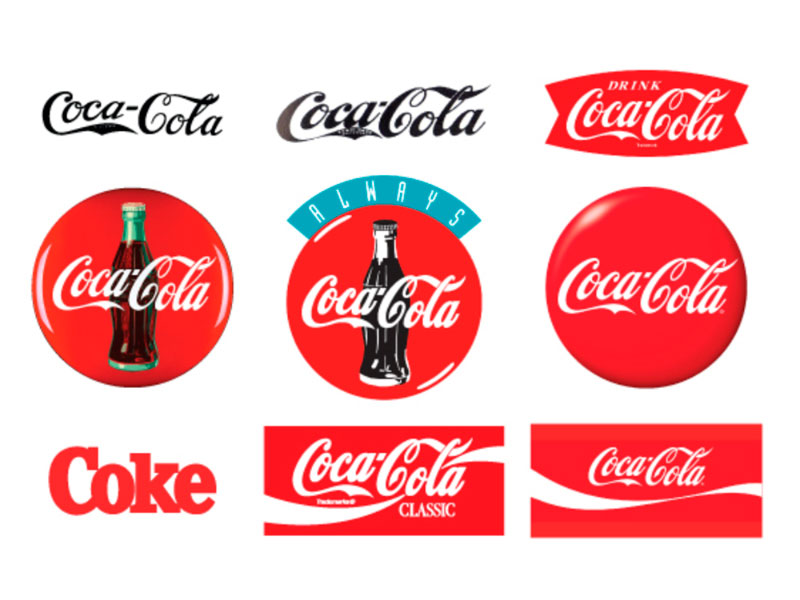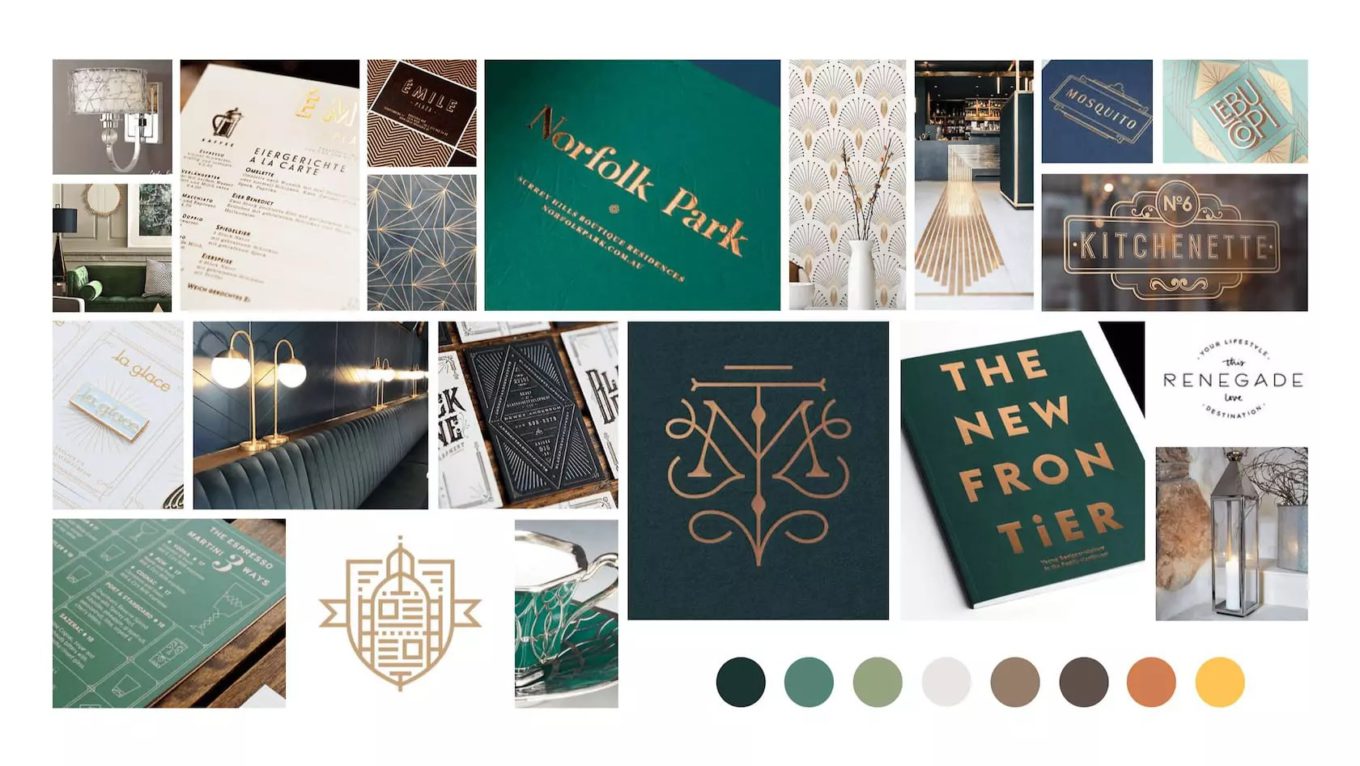
What Is a Corporate Identity Manual? 7 Steps to Make One
Last update: 8 September 2023 at 01:16 pm
If we asked you about the difference between corporate identity, brand image, and brand positioning, could you answer without hesitation?
Understanding these concepts in depth will directly affect the way your brand communicates and the effectiveness of the messages you deliver to your audience.
In this article, we explain in detail the concept of corporate identity and how you can develop it for your company.
What Is Corporate Identity?
When we talk about corporate identity, we refer to a company’s way of presenting itself to the world. Although it is common to think that it is limited to the company’s logo, the truth is that it is given by a series of elements that, although they include the company logo and the corporate design, include much more…beyond what we usually describe as mere brand identity.
Corporate identity is given by two main elements: internal and external.
Within the internal ones we find :
- Values,
- The culture,
- Messages,
- Communication,
- The history of the company.
While in the external ones we see :
- The name,
- The corporate design,
- The logo,
- The slogan,
- The color palette,
- The typography
The graphic style governs the photographs and illustrations.
Sortlist wants to encourage you to think of a strong corporate identity as if it were the personality of your company manifested in a physical and tangible way.
It is the images, sensations, emotions, philosophy, and principles that your company conveys through corporate communication. We could even say that it is a mix between what your company is and how you present it to your customers, your employees, and your stakeholders.
Taking the time to develop this concept within your company brings with it a number of benefits. One of the most obvious is that it allows you to align communications, both internal and external, and of course, to have greater control over what and how your company communicates.
A corporate visual identity will also help you to differentiate yourself from the competition, to position yourself in the market and in the minds of your consumers.
However, its benefits do not end there. Being a tool that will help you communicate in a consistent and aligned way with your mission, vision, and values will allow you to develop the trust of the different stakeholders in your organization and the loyalty of your customers.
3 Examples of Strong Corporate Identity
To help you better understand how this concept is applied, we share 3 examples of strong corporate identity of different companies recognized worldwide.
Case 1: Apple
A company well known worldwide for its products such as personal computers and mobile devices. However, their success lies not so much in what they sell but in their marketing strategies and how they have managed to capture the attention and loyalty of their consumers by always appealing to an emotional connection.

We see it over and over again in their communications, on their website, in their promotional pieces. Apple seeks to highlight how the buyer will feel when purchasing their products.
They convey messages that appeal to lifestyle, elegance, sophistication, social status, creativity, and performance. Its graphic line, colors, and even its slogan “Think different” reinforce this identity.
Case 2: Nike
When you think of Nike, what’s the first thing that comes to mind? We see the words sports, victory, competition, success, overcoming.
This is not something random, it is what the brand has achieved thanks to the consistency of its messages over the years in the market. All these words are nothing more than highly evoked values both in its advertising pieces and in the rest of its communications.

In fact, if we compare it with one of its great rivals, Adidas, we see a marked difference between one company and the other.
Their logos could not be more different, their visual identity and marketing campaigns the same. And we see how Nike has sought to simplify their logo to the minimum expression, always keeping their slogan “Just Do It” and the essence of who they are. Nike is a brand that inspires you to always do your best.
For some time now, Nike has been reinforcing their inspirational messages for minorities of gender, origin or religion. And they are doing it successfully. As seen here in one of their ad campaigns.
Case 3: Coca Cola
When you hear the name of this soft drink brand, the color, typography, an advertising piece, and even the sound or smell of its products immediately come to mind.
This is living proof of a corporate identity that has been consistent over time and has helped position the brand in the minds of its consumers.

What Is the Corporate Identity Manual?
A corporate identity manual outlines a brand’s key graphic elements, whether digital or printed.
Additionally, it specifies the accepted and prohibited applications or uses, the corporate color palette, the accepted typographies, and more.
The reasons why we recommend you to have a corporate identity manual are simple.
First of all, it is the ideal way to ensure consistency in the use of your company’s image. The manual will specify all the details of how to use and how not to use the image.
It’s a great time-saving tool for brand artwork and promotions. The manual is the reference document par excellence that should be shared with any graphic design agency, designer and even associates who are going to create artwork with your brand:
- Pieces for social networks,
- Banners,
- Stationery,
- Decoration of stores or stands,
- Packaging,
- TV or press ads,
- Catalogs,
- etc.
How to Make a Corporate Identity Manual?
Every company and every brand, regardless of its size, needs a corporate identity manual. This document ensures consistent self-presentation to any audience or in any format, as mentioned earlier.
That’s why we want to explain in 7 simple steps how you can design your own manual:
1- Write your brand story, mission, and vision
These three elements are the basis for creating your brand’s personality. They make it more human. All the elements below should be inspired by this point.
2- Describe the logo and its variants
Although your company’s identity goes beyond the logo, this is the first visual element with which it is related. Therefore, you must dedicate a section to specify its correct use. Include its variations in light and dark backgrounds. If reduced versions are allowed or not and when they can be used.
3- Define the corporate color palette
Specify the color palette that defines your brand. We recommend limiting yourself to four colors or less. Try to include the pantone and its corresponding references (CMYK, RGB, etc.) for printed and digital material.
4- Specify the typographies allowed
These will help to reflect the brand’s personality. There are fonts that will convey more informal, colloquial, or childish messages, while others are associated with formality, elegance, and exclusivity.
Identify which typefaces to use (in titles, subtitles, slogans, texts), the reason behind each one, whether they should be aligned to the right, center, or left, and the separation between letters and lines.
5- Add references for patterns, icons, and other graphic elements
It is usual for companies to resort to photographs, icons, and other elements to represent their brands. Including references to the styles is achieved by maintaining the style throughout all communications and artwork that are made.
From Sortlist we recommend including a moodboard (collage of inspiring images) or references that have worked very well in the past.

6- Define correct and incorrect applications
One of the most important sections of any identity manual is the one where you detail which are the accepted ways of using the image and which are not.
Try to detail all the prohibited uses in order to avoid mistakes in the design of any artwork.
7- Specify the voice of your brand
Just as the visual part is key, the tone of voice, i.e. the way of writing and communicating also plays a fundamental role in the way your brand is perceived.
Write down the accepted and forbidden ways of communicating, the adjectives with which your brand is associated, and the recommended best practices.
Once you have completed these steps, you only have to write it down in a format that is friendly and accessible to anyone.
Remember that this document will be shared with your employees and marketing teams, as well as with your associates and vendors.
Conclusion
In conclusion, we just want to remind you that having a defined corporate identity will be the key to consistency in all your communications, both visual, written, and digital.
And this, in the long run, translates into the positioning of your brand in the minds of your consumers. You can always call on one of our brand positioning agencies if you need help.
So, are you ready to start working on your company’s corporate identity manual?





